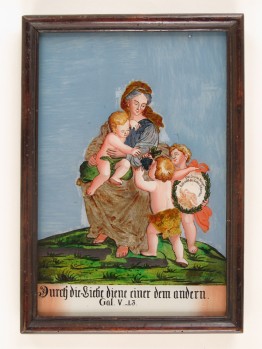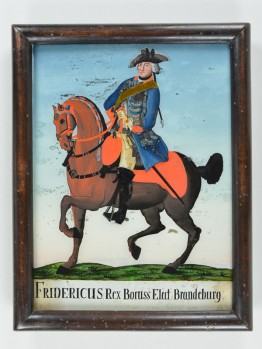Impressum
Herausgeber
Stadt Kaufbeuren
Kaiser-Max-Straße 1
87600 Kaufbeuren
Tel.: 08341/437-0
E-Mail: info@kaufbeuren.de
Fax: 08341/437-660
Internet: http://www.kaufbeuren.de
Die Stadt Kaufbeuren ist eine Körperschaft des öffentlichen Rechts.
Sie wird vertreten durch den Oberbürgermeister Stefan Bosse.
Umsatzsteuer-Identifikationsnummer gem. § 27 a Umsatzsteuergesetz:
DE 128680225
Verantwortlich für den Inhalt
Museumsleitung Stadtmuseum Kaufbeuren
Petra Weber M.A.
08341/96683911
petra.weber@kaufbeuren.de
Haftungsausschlüsse
Alle auf dieser Internetseite bereit gestellten Informationen haben wir nach bestem Wissen und Gewissen erarbeitet und geprüft. Eine Gewähr für die jederzeitige Aktualität, Richtigkeit, Vollständigkeit und Verfügbarkeit der bereit gestellten Informationen können wir allerdings nicht übernehmen. Unser Internetangebot enthält sog. „externe Links“ (Verlinkungen) zu anderen Internetseiten, auf deren Inhalt wir keinen Einfluss haben. Aus diesem Grund übernehmen wir für diese Inhalte auch keine Gewähr. Für die Inhalte und Richtigkeit der über die verlinkten Internetseiten bereitgestellten Informationen ist vielmehr der jeweilige Anbieter der verlinkten Internetseiten verantwortlich. Zum Zeitpunkt der Verlinkung waren keine Rechtsverstöße erkennbar. Bei Bekanntwerden einer solchen Rechtsverletzung wird der Link umgehend entfernt.
Ein Vertragsverhältnis mit den Nutzern des Internetangebots kommt nicht zustande.
Wir haften nicht für Schäden, die durch die Nutzung dieses Internetangebots entstehen. Dieser Haftungsausschluss gilt nicht, soweit die Vorschriften des § 839 BGB (Haftung bei Amtspflichtverletzung) einschlägig sind. Für etwaige Schäden, die beim Aufrufen oder Herunterladen von Daten durch Schadsoftware oder der Installation oder Nutzung von Software verursacht werden, übernehmen wir keine Haftung.
Nutzungsbedingungen
Texte, Bilder, Grafiken sowie die Gestaltung dieser Internetseiten können dem Urheberrecht unterliegen.
Nicht urheberrechtlich geschützt sind (§ 5 UrhG):
Gesetze, Verordnungen, amtliche Erlasse und Bekanntmachungen sowie Entscheidungen und amtlich verfasste Leitsätze zu Entscheidungen und andere amtliche Werke, die im amtlichen Interesse zur allgemeinen Kenntnisnahme veröffentlicht worden sind, mit der Einschränkung, dass die Bestimmungen über Änderungsverbot und Quellenangabe in § 62 Abs. 1 bis 3 und § 63 Abs. 1 und 2 UrhG entsprechend anzuwenden sind.
Als Privatperson dürfen Sie urheberrechtlich geschütztes Material zum privaten und sonstigen eigenen Gebrauch im Rahmen von § 53 UrhG verwenden. Eine Vervielfältigung oder Verwendung urheberrechtlich geschützten Materials dieser Seiten oder Teilen davon in anderen elektronischen oder gedruckten Publikationen und deren Veröffentlichung ist nur mit unserer Einwilligung gestattet. Diese Einwilligung erteilen auf Anfrage die für den Inhalt Verantwortlichen. Der Nachdruck und die Auswertung von Pressemitteilungen und Reden sind mit Quellenangabe allgemein gestattet.
Weiterhin können Texte, Bilder, Grafiken und sonstige Dateien ganz oder teilweise dem Urheberrecht Dritter unterliegen. Auch über das Bestehen möglicher Rechte Dritter geben Ihnen die für den Inhalt Verantwortlichen nähere Auskünfte.
Erreichbarkeit
Öffnungszeiten Stadtmuseum Kaufbeuren:
Dienstag bis Sonntag 10.00 – 17.00 Uhr
Postanschrift
Stadtmuseum Kaufbeuren
Kaisergäßchen 12 - 14
87600 Kaufbeuren
E-Mail: stadtmuseum@kaufbeuren.de
Tel.: 08341/9668390
Social Media Angebote
Dieses Impressum gilt auch für unsere Social Media-Präsenzen auf: www.instagram.com/stadtmuseumkaufbeuren und www.facebook.com/stadtmuseumkaufbeuren


